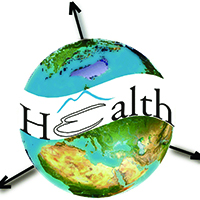Ecological niche modeling of Babesia sp infection in wildlife experimentally evaluated in questing Ixodes ricinus.

Submitted: 2 December 2019
Accepted: 4 February 2020
Published: 17 June 2020
Accepted: 4 February 2020
Abstract Views: 1329
PDF: 720
HTML: 64
HTML: 64
Publisher's note
All claims expressed in this article are solely those of the authors and do not necessarily represent those of their affiliated organizations, or those of the publisher, the editors and the reviewers. Any product that may be evaluated in this article or claim that may be made by its manufacturer is not guaranteed or endorsed by the publisher.
All claims expressed in this article are solely those of the authors and do not necessarily represent those of their affiliated organizations, or those of the publisher, the editors and the reviewers. Any product that may be evaluated in this article or claim that may be made by its manufacturer is not guaranteed or endorsed by the publisher.
Similar Articles
- Ulrik B. Pedersen, Dimitrios-Alexios Karagiannis-Voules, Nicholas Midzi, Tkafira Mduluza, Samson Mukaratirwa, Rasmus Fensholt, Birgitte J. Vennervald, Thomas K. Kristensen, Penelope Vounatsou, Anna-Sofie Stensgaard, Comparison of the spatial patterns of schistosomiasis in Zimbabwe at two points in time, spaced twenty-nine years apart: is climate variability of importance? , Geospatial Health: Vol. 12 No. 1 (2017)
- Eva M. De Clercq, Agustin Estrada-Peña, Safiou Adehan, Maxime Madder, Sophie O. Vanwambeke, An update on distribution models for Rhipicephalus microplus in West Africa , Geospatial Health: Vol. 8 No. 1 (2013)
- Kiara M. Rivera, Abolfazl Mollalo, Spatial analysis and modelling of depression relative to social vulnerability index across the United States , Geospatial Health: Vol. 17 No. 2 (2022)
- Federica Giardina, Jonas Franke, Penelope Vounatsou, Geostatistical modelling of the malaria risk in Mozambique: effect of the spatial resolution when using remotely-sensed imagery , Geospatial Health: Vol. 10 No. 2 (2015)
- Chigozie Louisa J. Ugwu, Temesgen Zewotir, Spatial distribution and sociodemographic risk factors of malaria in Nigerian children less than 5 years old , Geospatial Health: Vol. 15 No. 2 (2020)
- Thiago S. de Azevedo, Brian Patrick Bourke, Rafael Piovezan, Maria Anice M. Sallum, The influence of urban heat islands and socioeconomic factors on the spatial distribution of Aedes aegypti larval habitats , Geospatial Health: Vol. 13 No. 1 (2018)
- Amornrat Luenam, Nattapong Puttanapong, Modelling and analyzing spatial clusters of leptospirosis based on satellite-generated measurements of environmental factors in Thailand during 2013-2015 , Geospatial Health: Vol. 15 No. 2 (2020)
- Suparerk Suerungruang, Kittipong Sornlorm, Wongsa Laohasiriwong, Roshan Kumar Mahato, Spatial association and modelling of under-5 mortality in Thailand, 2020 , Geospatial Health: Vol. 18 No. 2 (2023)
- Jihoon Jung, Yoonjung Ahn, Joseph Bommarito, Disparities in COVID-19 health outcomes among different sub-immigrant groups in the US - a study based on the spatial Durbin model , Geospatial Health: Vol. 17 No. s1 (2022): Special issue on COVID-19
- Dustin T. Duncan, Ryan R. Ruff, Basile Chaix, Seann D. Regan, James H. Williams, Joseph Ravenell, Marie A. Bragg, Gbenga Ogedegbe, Brian Elbel, Perceived spatial stigma, body mass index and blood pressure: a global positioning system study among low-income housing residents in New York City , Geospatial Health: Vol. 11 No. 2 (2016)
<< < 3 4 5 6 7 8 9 10 11 12 > >>
You may also start an advanced similarity search for this article.

 https://doi.org/10.4081/gh.2020.843
https://doi.org/10.4081/gh.2020.843




